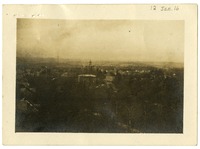Nothing but Numbers: A Narrative of Convict Labor at Clemson College
Item set
Title
Nothing but Numbers: A Narrative of Convict Labor at Clemson College
Description
This collection contains items related to the narrative of Convict Labor at Clemson College.
Extent
Photographs; correspondence; trustees minutes and presidential reports
Items
-
Farm & Contract Detail
This series consists of lists of prisoners working outside the penitentiary on farms or as contract laborers. Information includes the date, prisoner's name, location of work detail, and remarks (generally date discharged). Attached is volume 4 which covers the years 1889-1891.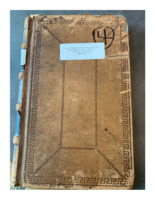
-
Portrait of J.E. Wannamaker and Richard Newman Brackett
John Edward Wannamaker supported the state experiment stations. He later served on the Clemson College Agriculture and the State Fertilizer Board of Control. Left: J.E. Wannamaker, Right: Richard Newman Brackett.
-
Unnamed Prisoner
An unnamed prisoner tied around a pickaxe for punishment in a Georgia labor camp. Photograph by John L. Spivak, during his research for his 1932 book, Georgia Nigger.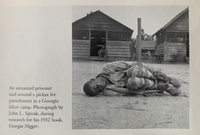
-
Steel Cages
These cruel portable steel cages provided transportation for convict road workers in Georgia.
-
Southern Chain Gang
A southern chain gang in 1898. Photograph by Carl Weis.
-
South Carolina Convict Act
An act to utilize the convict labor of the state.
-
Railway Map Showing Clemson College
A map of the railroad system of South Carolina in the second decade of the twentieth century showing the location of Clemson College.
-
Convict Punishment
A prisoner receiving punishment in a Georgia Labor camp.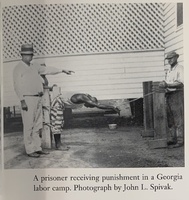
-
Pendleton District Chain Gang of Prisoners
A chain gang of prisoners, as seen in the late 1800s. Often built public roads or worked on private farmland, with a heavy death toll.
-
The Original Hardin Hall
The original Hardin Hall, the first academic building constructed on Clemson's campus.
-
Clemson corn crib with convict laborers
Corn crib with convict laborers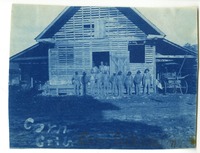
-
Convict Wagon Example
A chain gang of convicts engaged in road work. Pitt County, North Carolina. Autumn 1910. The inmates were quartered in the wagons shown in the picture. Wagons were equipped with bunks and move from place to place as labor is utilized. The dogs are bloodhounds used for running down any attempted escapes.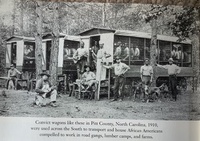
-
Convict Wagon
Illustration of another type of moving prison camp, the converted boxcar used to house railroad construction gangs. Depicted is both a rear and front view.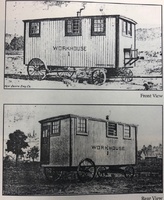
-
South Carolina prisoners mine phosphate
Illustration of South Carolina prisoners mining phosphate.
-
Convict Keep
Abandoned convict "keep" at a lime quarry in Lee County, Alabama. Photography by E.W. Russell
-
An African American convict at work on the campus
An African American convict at work on the campus. This photo typifies the work done by African American convicts, by whose labors Clemson's original campus and buildings were built.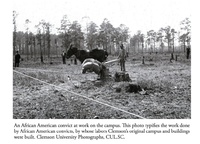
-
Convict Labor at Clemson Agricultural College
An illustration of the hard labor completed by convicts at Clemson College.
-
Cadets gathered at Textile Building under construction
Cadets, otherwise known as Clemson College students, gathered at the future site of the textile building, later called Godfrey Hall, in this early construction photo.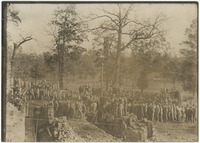
-
Board of Trustees
An early photo of the Board of Trustees of the Clemson Agricultural College of South Carolina.
-
Convict Wagon Floorplan
Floor plan illustration of mule-drawn convict wagons. These 'rolling cages' contained two tiers of bunks, a stove, and a toilet, as well as a small compartment for two guards.
-
Black convicts in Georgia
Black convicts forced to work in Thomasville, Georgia in the late 1880s.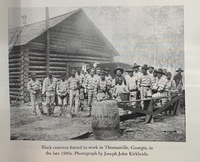
-
Clemson College Campus
High-elevation view of campus taken from the east. On the front of the photograph: 12 Jan. 16.